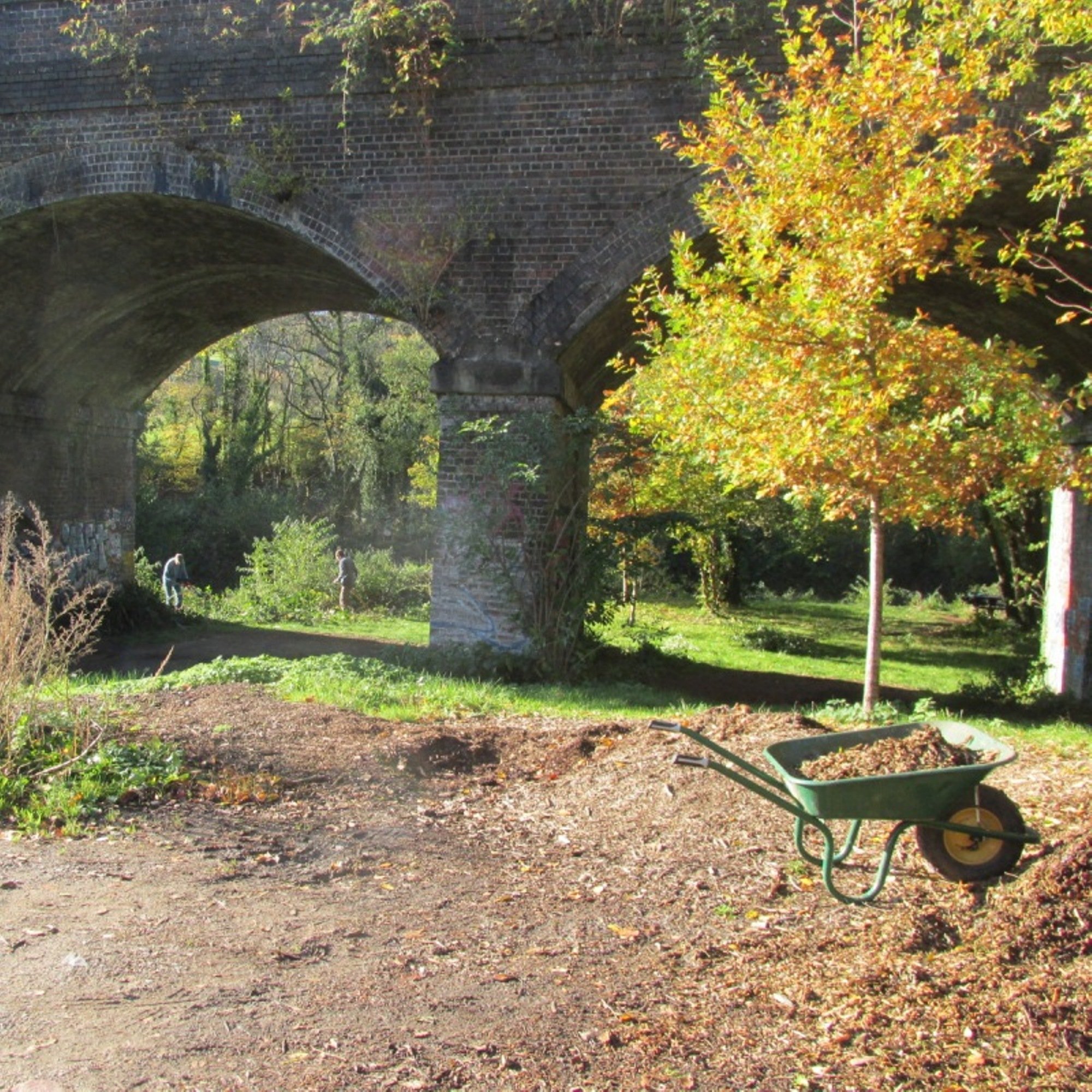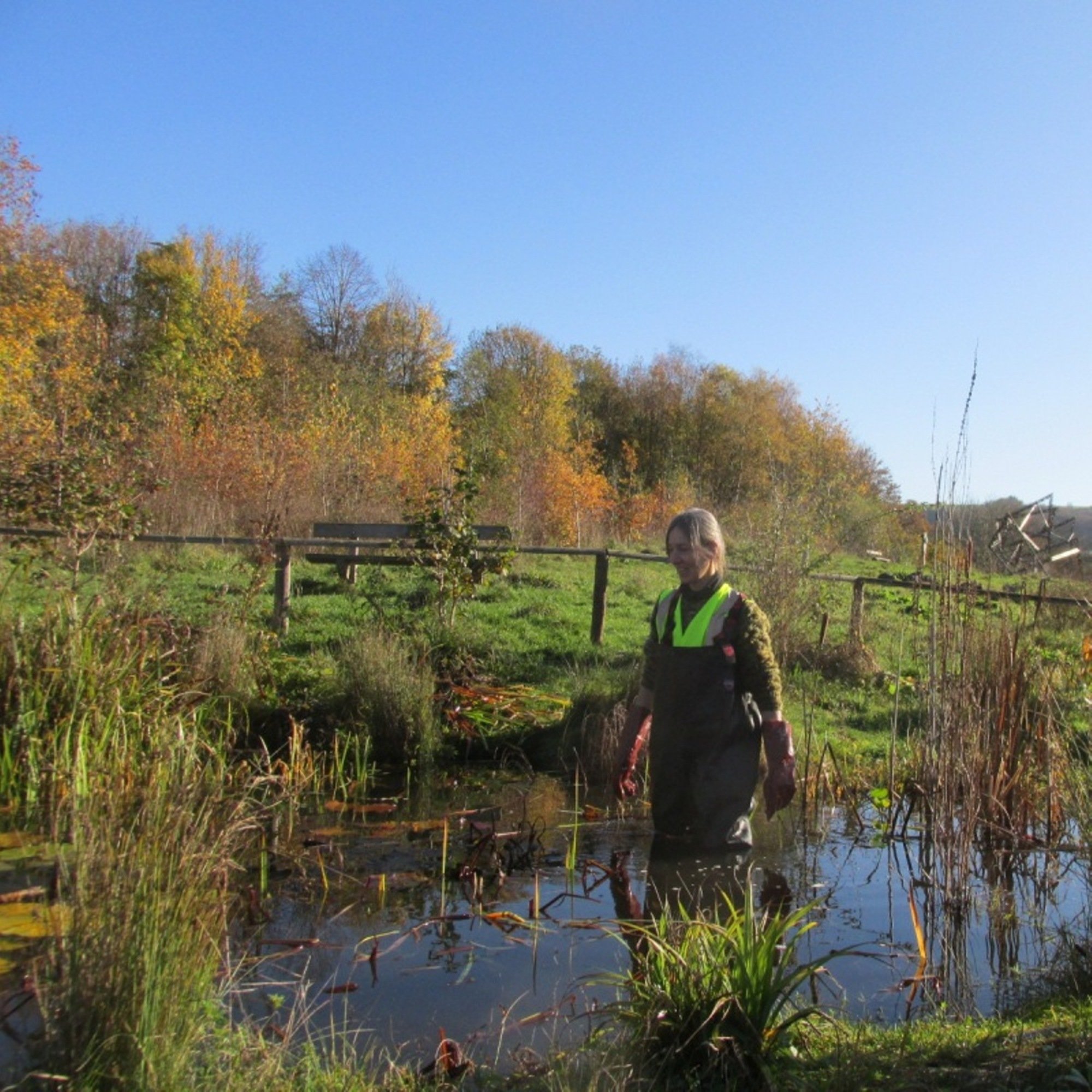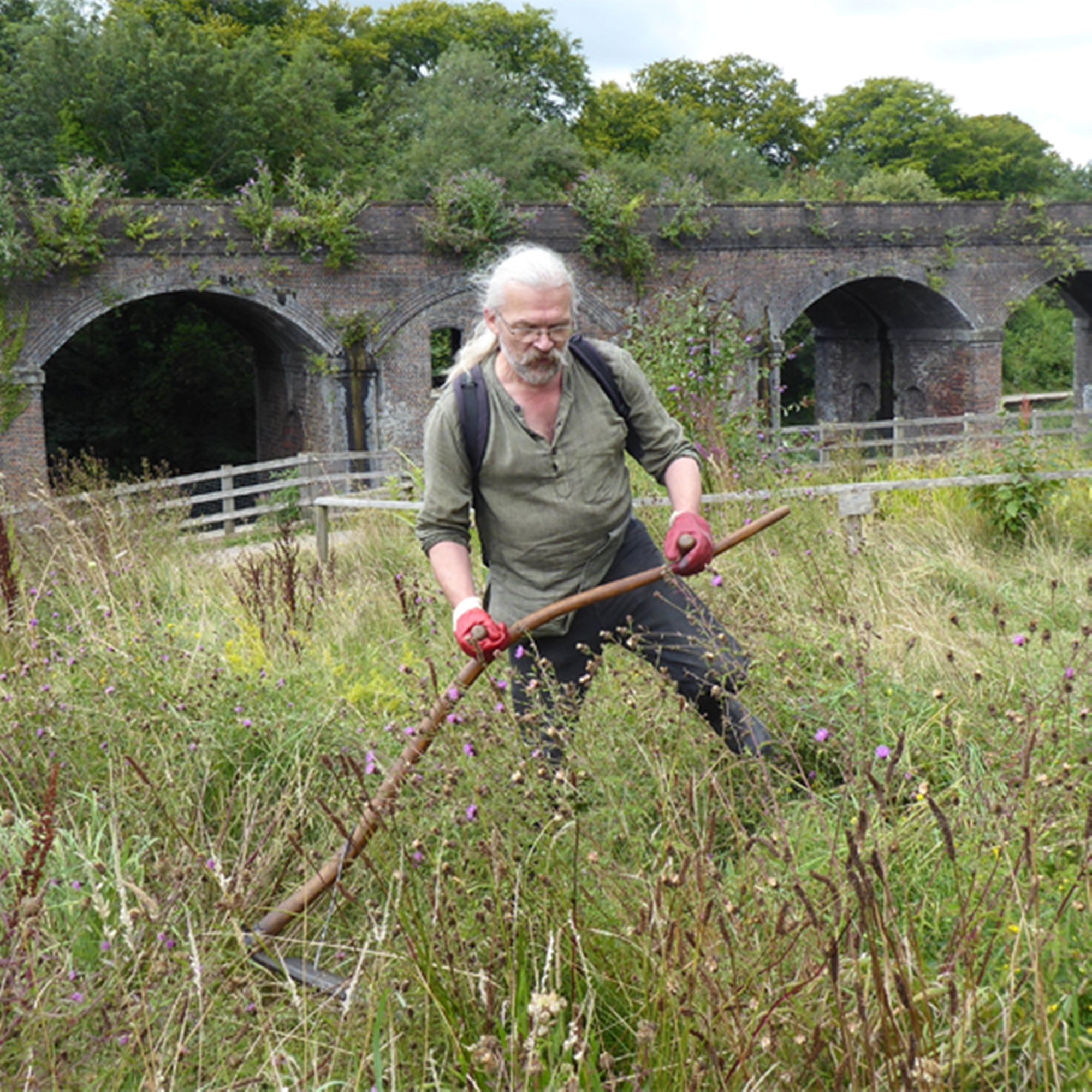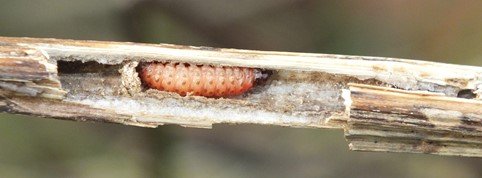Capel’s Mill, Stroud
Stroud Valleys Project has been working on this District Council-owned site since 2014. This canal-side former landfill site has become a haven for wildlife, and we have worked in partnership to plant more than 500 trees and create a wildflower meadow. We have also created a pond to increase our amphibian population. Our climate cairn reminds people of the climate emergency and provides a basking place for cold-blooded reptiles.
We run regular volunteering groups here, maintaining the site for the benefit of people and wildlife alike. We also run occasional rural skills workshops here – see our events page for details of anything coming up.
Autumn 2024 update:
Mill missions by Fred Miller
Scything is one of our passions: Ecotricity staff came to scythe part of the meadow at Capel’s Mill in July. Our regular work parties are scything right into October and November, to help the wildflowers to thrive. This reduces the grass vigour, knocks seeds to the ground and exposes bare patches for seed germination. We leave some areas uncut so that certain insects can overwinter in the dried plants, for example, the aptly named Knapweed Seedhead Moth larva.
One of our missions is to create beautiful ‘dead hedges’ in the landscape. When we prune the bramble and bushes, we create a woven structure with all the twigs and branches.
This not only looks interesting, but is also a home for creatures.
This crafted-looking element in the landscape demonstrates intentional care of our environment. It is a kind of message about the environment to passers-by, that hopefully spreads the idea of care and … not littering! But it also gives a nook and a cranny for wrens and toads to hide in.
Both the Badger Path and Viaduct Glade now have these features, which will be extended over the winter.
We now also have Y11 students from Thomas Keble joining us, doing jobs such as spreading woodchip and pruning the canal bank. They are also studying the history of the area with Tony, the education officer from the Canals project.
Spring 2024: Catching up at Capel’s Mill by Fred Miller
The focus over the winter was to clear the sloping canal bank, near the viaduct.
The SVP team cut back bramble, Buddleia and Goat Willow. With all these prunings, they wove a dead hedge for wrens and toads.
The aim is to make this area more varied, allowing sunlight into the ground for wildflowers and at the same time opening up the space, so that there is a view of the canal and it feels safe and welcoming for people and wildlife.
With the spring came tool maintenance and reorganising the tool store. Our volunteer Al spent three hours’ hard work to give it a facelift.
There is now space and clarity!
Thanks, Al.
New steps in the Gully and improvements to the Badger Path are also transforming the area.
We are purchasing some equipment with funding from Gerry Robbins (our long-term supporter and former chair) to pump water from the canal to the pond using solar power, and we plan to work with Nailsworth Rotary Club to make this happen.
Autumn 2023: Capel’s Mill by Fred Miller
Enjoyment of insects and other creatures has peppered our year of maintenance work at Capel’s Mill. As we pruned along the towpath we were blessed with dragonflies. As we dug out the woodchip we found baby toads. Scything the meadow revealed crickets. Composting our waste disturbed a honey-bee’s nest with enormous wax combs hanging from the lid! In October, a large adult grass snake was seen basking.
The pond thrummed with life and did not dry out: we were ‘blessed’ by the rains this summer, but next year the expected weather is hot and DRY (it will be an ‘El Nino’ year added to climate change), so we have plans to install a water-pipe to supply the pond with water from the canal.
Sadly, there were some strange finds in the canal: home-made fish traps. These are dangerous to other life, and indeed an otter was found drowned in one, at Chalford. Many thanks to our vigilant volunteer, Rosie, in spotting these traps, taking them out of the water, and reporting them to the Environment Agency.
Spring 2023: Capel’s Mill capers by Fred Miller
Some of the bushes near the arches had their annual prune in January.
This was done with the aim of keeping the feel of the area open and welcoming for people, while leaving plenty of great thickets for the birds.
We have also been doing some maintenance such as the table here being painted by David.
Coming up: some more bird and bat boxes are being added, and there is a lot of woodchip to spread!
Wildlife spots...
Toad pawn in the pond, otters in the canal, flowering of Coltsfoot and the blooming of the Wild Pear.
Autumn 2022:
Nailsworth Rotary helping with maintenance
Jobs this year have included the repair of the pond fence by Robin and Frank from Nailsworth Rotary, and painting and improvement to the entrance fence by the two Davids!
John Marjoram (former Stroud Mayor) with regular volunteer David Awford at the Climate Cairn
The Climate Cairn now has enough stones, so thanks go to all those who brought a rock! The plan is that it will grow green with plants: Wild Thyme and Marjoram have been planted and we hope ants will colonise the stone mound. More inscriptions are being attached, as a sign of the collective action to restore nature in the current climate and ecological emergency.
In September, a raft race marked 50 years of the Cotswolds Canal Trust. Teams raced from Wallbridge to Capel’s Mill and back again, while being timed. At Capel’s Mill people watched the rafts, and there were also canoe demonstrations and paddle boarders in the canal. There was mural painting and ‘silly science’ under the arches, whilst SVP offered pond dipping, a nature trail and ‘treasures of landfill’. It is the first time the site has been used so extensively for an event and it seemed to work really well.
Volunteer Graeme Davis continues to record beautiful insects such as the White Plume Moth, shown here, as well as offering advice on habitat; one idea is to get primroses to grow under the small trees.
Previously:
Our supporter and wildlife photographer, Graeme Davis, sent in images of insect larvae at Capel’s Mill in the stem of a knapweed plant and inside a teasel leaf. An over-wintering pupa of the Knapweed Bell moth was lying in the stem, where it eats and pupates, before emerging as an adult in the spring. In the teasel leaf were tunnels, revealed by the sunlight, of a ‘leaf-mining’ fly (you can see these in the photos). These minute grubs have long gone, but we can still see the tunnels where they lived last year, eating the plant matter between the two outer layers of leaf. They would then have emerged as an adult fly.
The Knapweed Bell larva by Graeme Davis
Tunnels in Teasel Leaf of Chromatomyia ramosa by Graeme Davis
Both insects probably play a role in food chains, perhaps being eaten by bats and swifts. The Knapweed Bell is one of several moths that mimic bird droppings to stay hidden and escape predation. The life in such stems and leaves shows the benefits of not clearing away all perennial plant growth, as this gives a wide range of places for animals to hide including voles, slow worms, insects, and spiders.
Fungi and stones at Capel’s Mill
Quite a range of fungi has been found at this site. The woodchips which we bring and put around trees (as a mulch) seem to sprout all sorts of varieties, photographed here by our volunteer, Jean Chatelain.
Capel’s Mill’s ‘Climate Cairn’
We are building a communal dry-stone structure, involving as many people as possible, who are invited to bring a stone, a rock, or a pebble!
It will form a dry-stone dome with cavities at the base for toads and newts to hide in with wildflowers over the top. Each stone represents a step towards saving the biosphere, e.g.:
- An effective climate agreement at the UN climate conference in November 2021;
- A district-wide ‘carbon neutral by 2030’ strategy;
- A national renewable energy supply;
- Carbon-zero housing;
- Peat restoration;
- Wildlife-friendly farming;
and many, many more steps that are essential.
The Climate Cairn is providing a habitat for newts and toads to hibernate in, it has woodchip inside to form a food source for small invertebrates. It is made of a diversity of rocks, and blocks, brought by people, as well as being dug out from the ground of this old landfill site. This apparent ‘muddle’ represents all the things we need to do for our planet.
The Climate Cairn aims to stimulate long-term planning to secure the future of life on the planet, through awareness of the Earth’s great age, and understanding of its processes that sustain us. Both the geology and prehistory of our landscape are relevant. Our local limestone and clay rocks are from the Jurassic age, 200 million years old, and the Neolithic barrows on the Cotswold hills are a mere 5,000 years old!
Thinking with ‘Deep Time’ in mind will help make long-term species-saving decisions.























